Tucked away out of sight off the main road from Avanos to Goreme, Zelve was until 1952 a living community where ordinary people went about their daily life, grinding bulgur at the seten (mill), pressing grapes for pekmez (molasses) in the şaraphane (winery), rearing pigeons for their fertilizing manure in the güvercinliks (pigeonhouses) and bedding their animals down for the night in the cave-cut ahırs (stables). In that sense it was always a very different place from what is now the Göreme Open-Air Museum, which was a religious settlement inhabited by Byzantine monks and nuns, and was only unofficially lived in in later years after the population moved down the road to what eventually became Göreme village.
A newly laid path winds its way through the three valleys of Zelve with signs pointing out the otherwise easily missable evidence of the old lifestyle hidden away inside the caves. Don’t miss the millstone that would once have been turned by donkeys, nor yet the winery with a large niche in which the grapes would have been trodden, a hole in the corner allowing the juice to drain into jars set up beside it.
Zelve was not without its monastic community, which is thought to have lived in the area marked by three huge arched recesses in the third valley. They are currently roped off for safety reasons, which means, sadly, that you won’t be able to inspect one of the huge rolling stones that used to be used to close off tunnels from intruders as in the underground cities. The recesses overlook what used to be Zelve’s main square. Not surprisingly this has a small mosque to one side. From the outside this looks as if it was built conventionally out of locally quarried stone but if you peek inside you’ll see that the back part is cut straight out of the rock, as is the dainty little mihrab.
For those keen on seeing some of Cappadocia famous rock-cut churches, Zelve has a few tricks up its sleeve, including the Balıklı ve Üzümlü Kilise (The Church of the Fish and Grapes) in the first valley and easily recognizable by the damaged frescoes of angels over its entrance. Inside the grapes look suspiciously like giant strawberries, and the fish keep a very low profile. The same cannot be said of the prominent carved and painted crosses on the walls of the Kutsal Haç Kilisesi (Holy Cross Church) in the second valley. Finally, in the third valley the Direkli Kilise (Columned Church) has largely collapsed so that it looks more like a cave than a church.
For children, Zelve will seem like one giant adventure playground with endless holes to pop in and out of and lots of space in which to run around. Of course there’s still some risk from rockfall as attested by a pile of recently tumbled boulders in the third valley. What was once a dark and scary tunnel that ran from the third valley into the second, emerging abruptly on a ledge, has also been closed, presumably for safety reasons.
The clues to an all but lost way of life at Zelve may be intriguing, but many people will probably come away with just as vivid a memory of the site’s peaceful beauty with knobbly rock formations topping the steep sides of the valleys and great views opening out towards Avanos from on high.
Churches of Zelve, Cappadocia
- Columned Church (Direkli Kilise)
- Holy Cross Church (Kutsal Haç Kilisesi)
- Deer church (Geyikli Kilise)
- Church of the Fish ( Balikli Kilise)
- Church of the Grapes (Uzumlu Kilise)
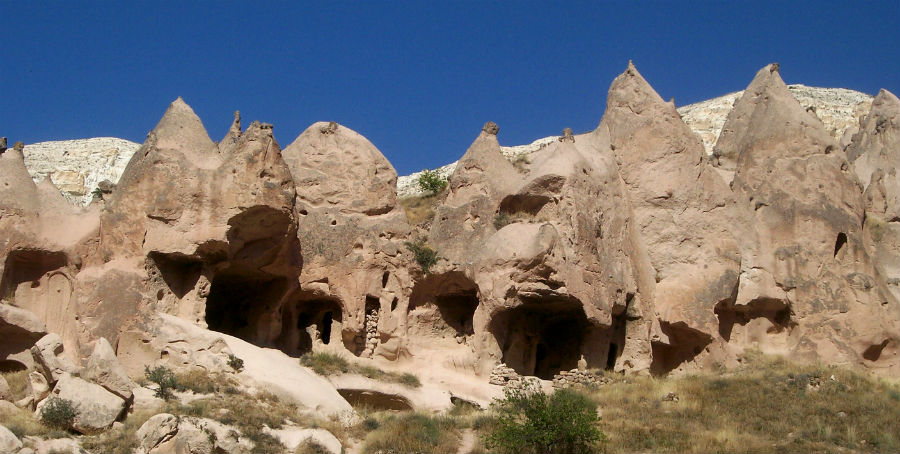
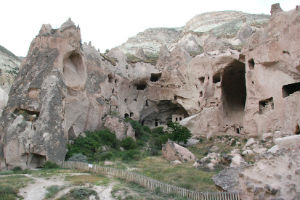
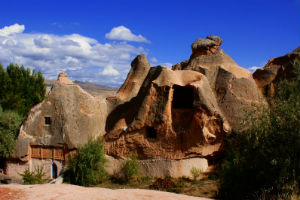
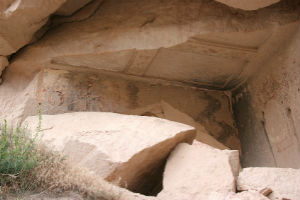
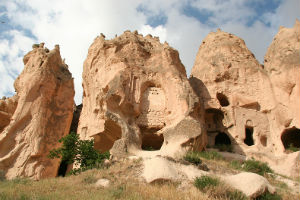
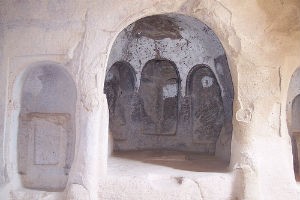
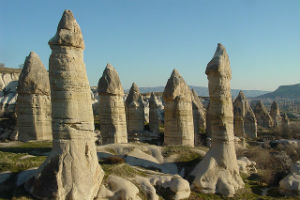


Great place to see the early Christian churches, homes and how they lived.
Enjoyed the views and the frescos in the rock churches. Best to read up about them so they make more sense. Greek orthadox has a bit different story to the normal one. Extra charges for some rock churches but we only went into the main ones in with ticket.